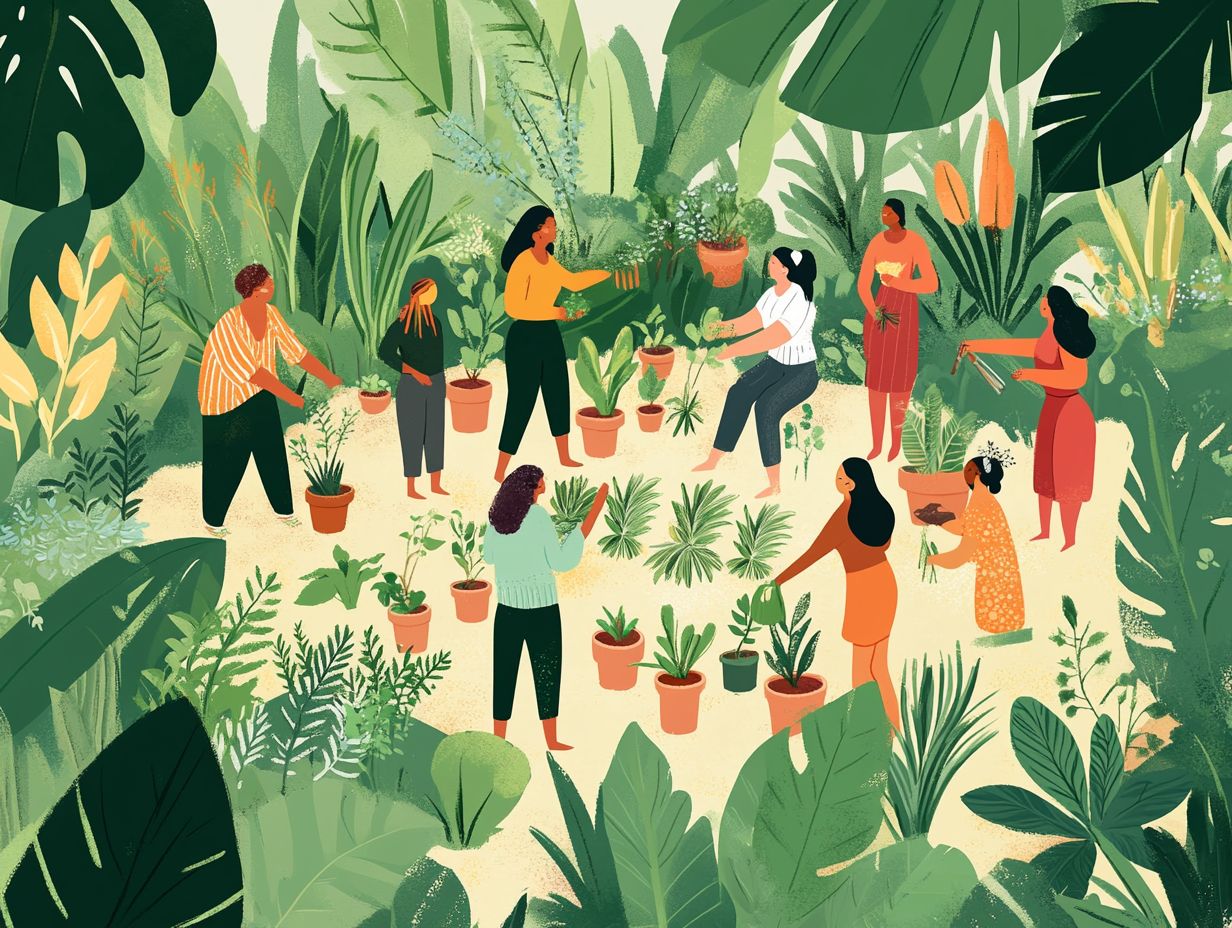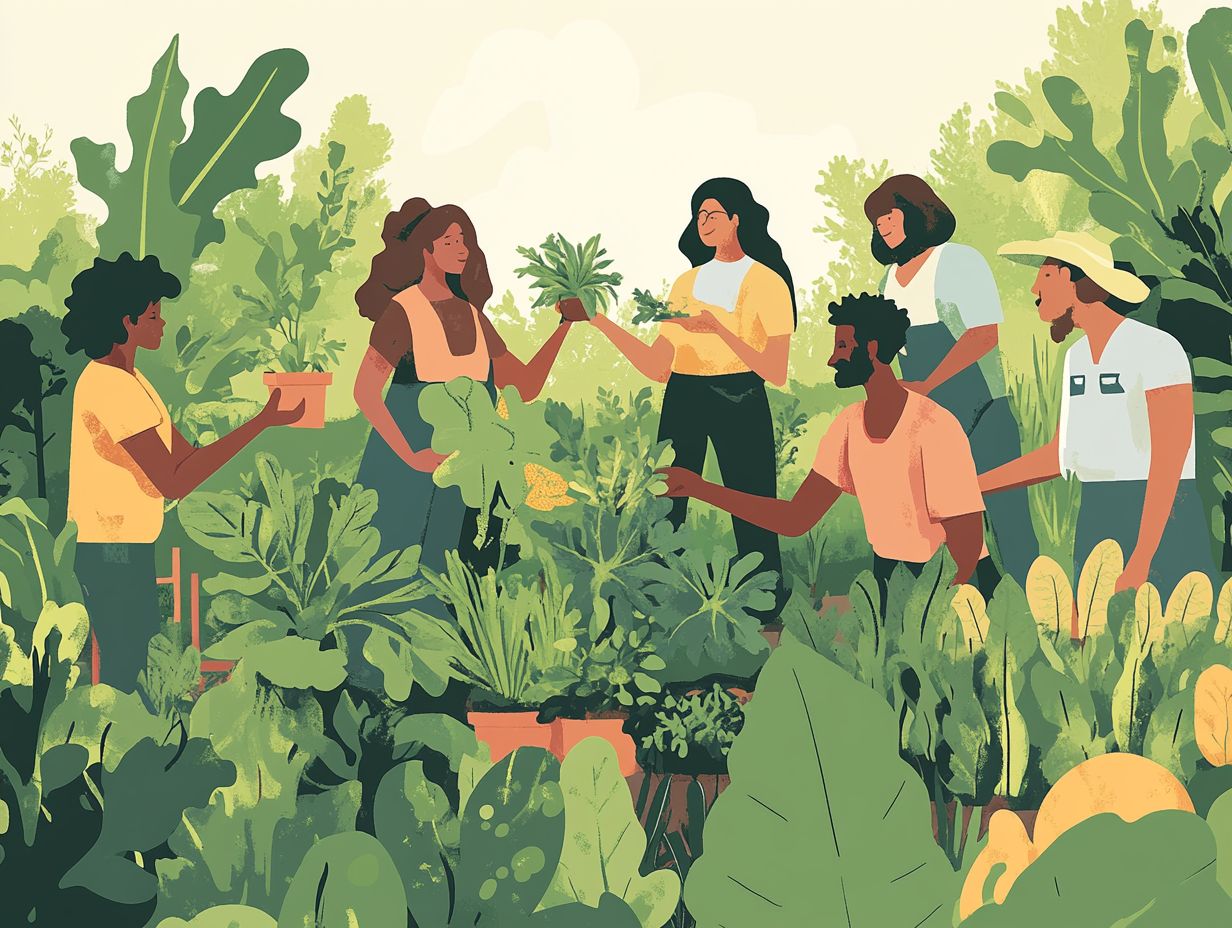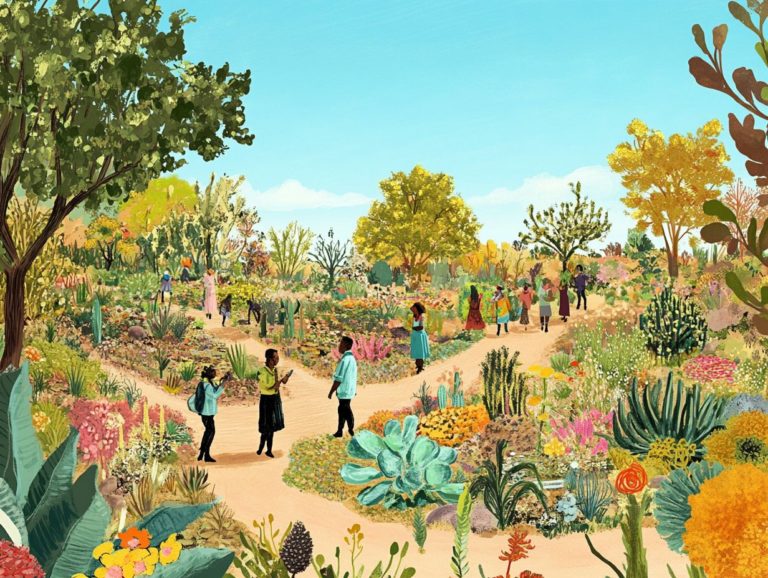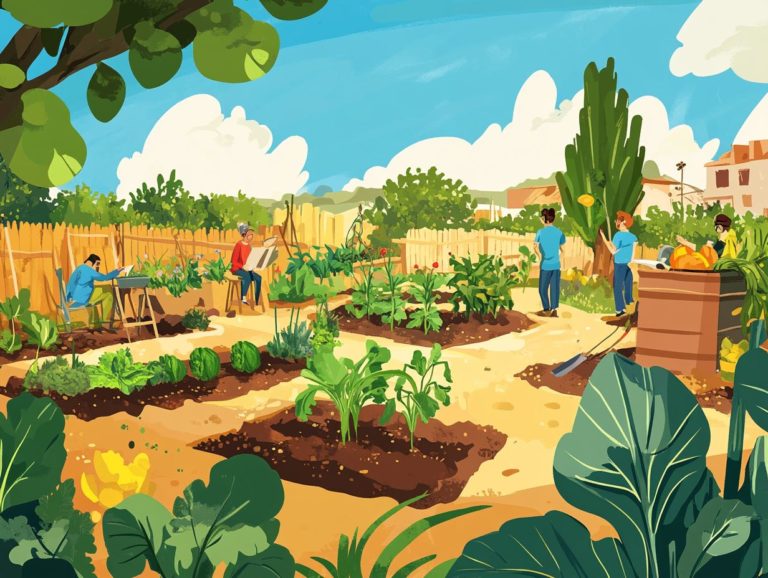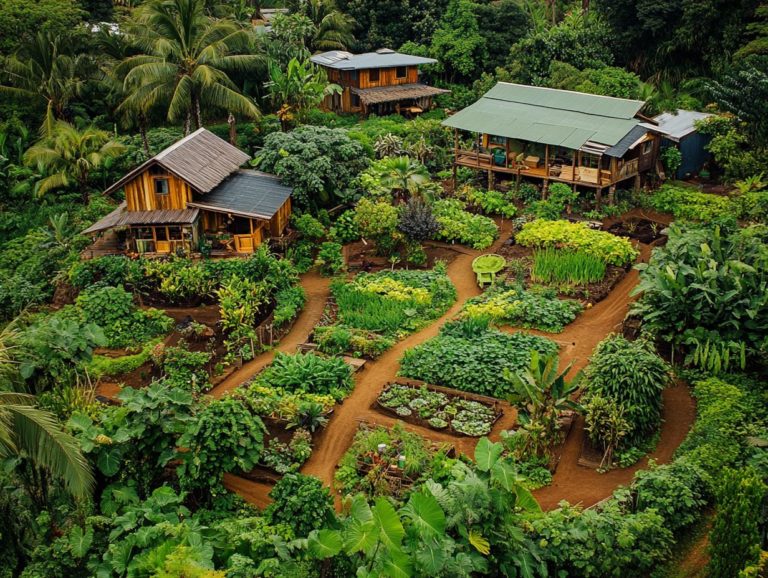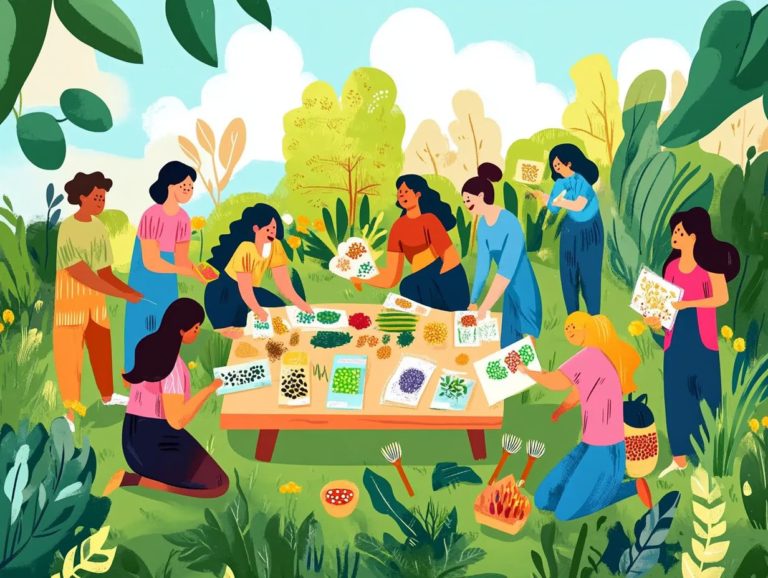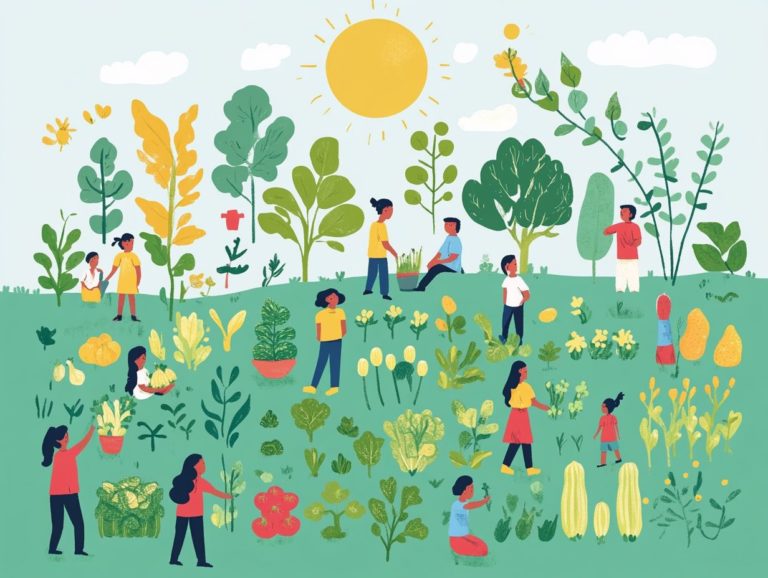25. How to Share Resources in Your Permaculture Community
Permaculture communities flourish on the principle of sustainable living, where individuals and groups unite to cultivate resilient ecosystems and foster resilient communities.
This article delves into what permaculture is all about, highlighting its significance and illustrating how resource sharing can enrich both personal lives and community dynamics, ultimately leading to sustainable societies. It examines a variety of shareable resources, effective communication strategies, and solutions to common challenges.
By the conclusion, you will gain a clearer understanding of how to establish a community network for sustainable resource-sharing that benefits everyone involved.
Contents
- Key Takeaways:
- Understanding Permaculture Communities
- Benefits of Sharing Resources
- Types of Resources to Share
- How to Share Resources Effectively
- Challenges and Solutions for Resource Sharing
- Creating a Sustainable Resource Sharing System
- Frequently Asked Questions
- 1. What is the importance of sharing resources in a permaculture community?
- 2. How can I identify which resources to share in my permaculture community?
- 3. How do I initiate the sharing of resources in my permaculture community?
- 4. Can I share resources with non-permaculture community members?
- 5. What are some challenges I may face when sharing resources in my permaculture community?
- 6. How can I ensure the sustainability and fairness of resource sharing in my permaculture community?
Key Takeaways:
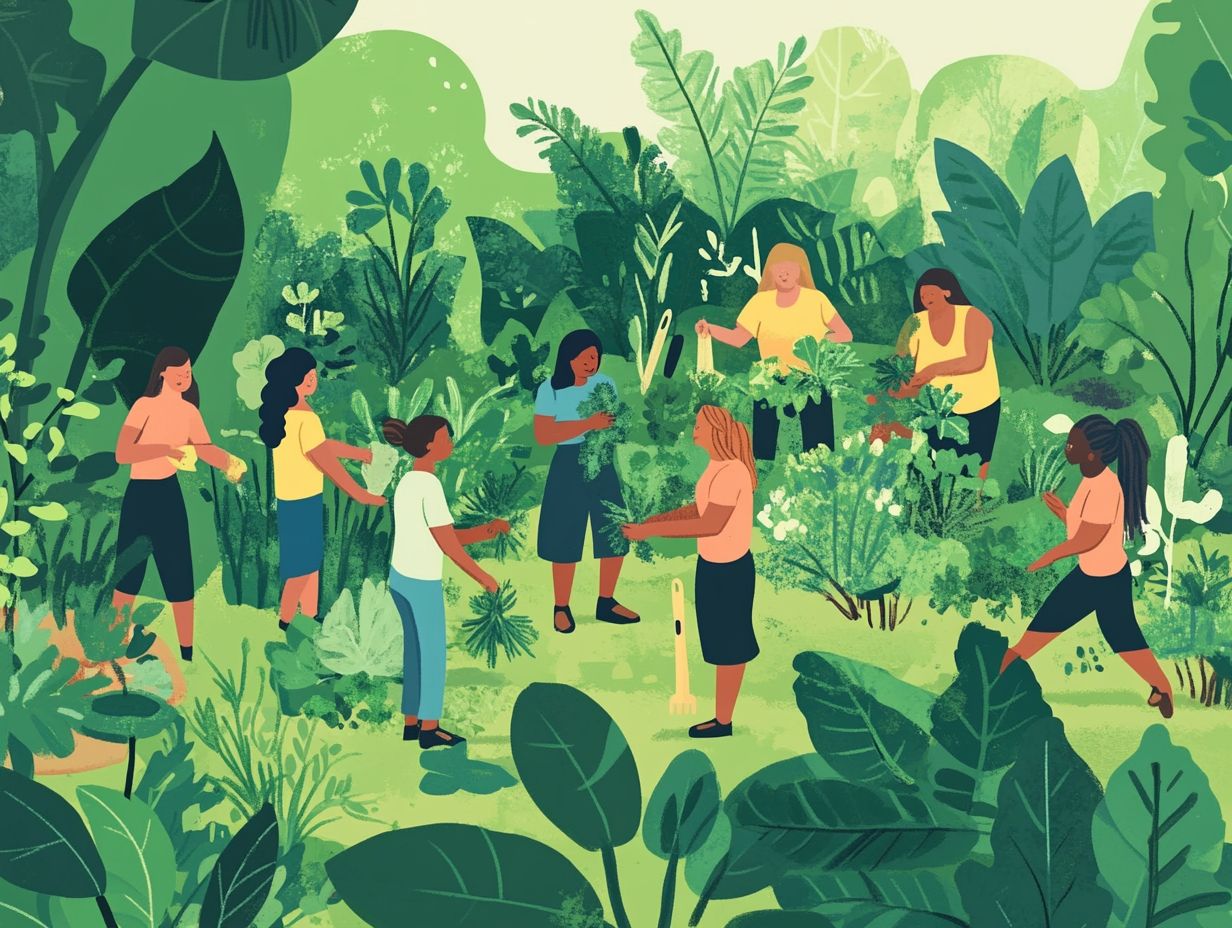
- Build a strong permaculture community by understanding and implementing sustainable resource-sharing practices.
- Promote individual and community resilience by sharing resources, reducing waste, and creating a sense of unity.
- Implement effective communication and collaboration strategies for successful resource sharing in permaculture communities, while addressing potential challenges and long-term solutions.
Understanding Permaculture Communities
Understanding Permaculture Communities invites you to delve into the intricate relationships and principles that define them, including the realms of permaculture activism and sustainable living. These communities are anchored in ecological design, emphasizing the creation of resilient societies that prioritize both earth care and people care.
They champion resource sharing and cooperative living, essential components for fostering social change and minimizing environmental impacts through grassroots efforts. Your involvement and support within these communities are pivotal for the long-term success and sustainability of their initiatives, ultimately enhancing ecological resilience for generations to come.
What is Permaculture and Why is it Important?
Permaculture represents a smart way to design our environment by creating sustainable living environments that align human activities with the rhythms of the natural ecosystem. At its heart lie three fundamental ethics: earth care, people care, and fair share.
Emerging in the 1970s as a response to the harmful effects of industrial agriculture, permaculture draws inspiration from the collaborative practices of indigenous cultures and the wisdom of natural ecosystems. By prioritizing biodiversity having many different kinds of plants and animals in one area and leveraging local resources, it plays a crucial role in addressing pressing environmental challenges, such as climate change and food insecurity.
Consider community gardens, which not only yield fresh produce but also foster social connections. Initiatives like Community Supported Agriculture (CSA) bridge the gap between consumers and local farmers, championing sustainable practices and minimizing carbon footprints.
Through these initiatives, permaculture exemplifies a holistic approach to nurturing both the environment and society, creating a more sustainable and resilient future for all.
Benefits of Sharing Resources
Sharing resources within permaculture communities offers a wealth of benefits, nurturing sustainable societies and resilient networks while reducing environmental impacts. By understanding how to leverage local resources for permaculture, communities can enhance their efforts further.
By embracing initiatives such as Food Not Lawns and encouraging resource sharing, you can cultivate a robust support network that significantly enhances local resilience and sustainability through innovative tools for community-based permaculture.
This collaborative spirit not only strengthens community bonds but also paves the way for a greener, more sustainable future.
Don’t wait start building your community network today!
Advantages for Individuals and Communities
When you and your community actively engage in resource sharing, you unlock a wealth of benefits, such as fortified community support, enriched social networks, and improved access to local farms and resources. For those interested in deepening these connections, hosting events like a permaculture potluck can foster a collaborative mindset that encourages volunteering and skills sharing. It nurtures a profound sense of belonging and interconnectedness.
For example, a neighborhood group that organizes tool swaps or community gardens maximizes resource utilization and invites residents to collaborate, enriching their understanding of sustainable practices.
Initiatives like local food co-ops or skill-sharing workshops, where community members can teach and learn various skills from each other, provide platforms for you to learn from others and foster invaluable connections. These projects show just how powerful pooling resources can be in creating exciting solutions that tackle local challenges. They create an environment where your contributions are recognized and genuinely valued.
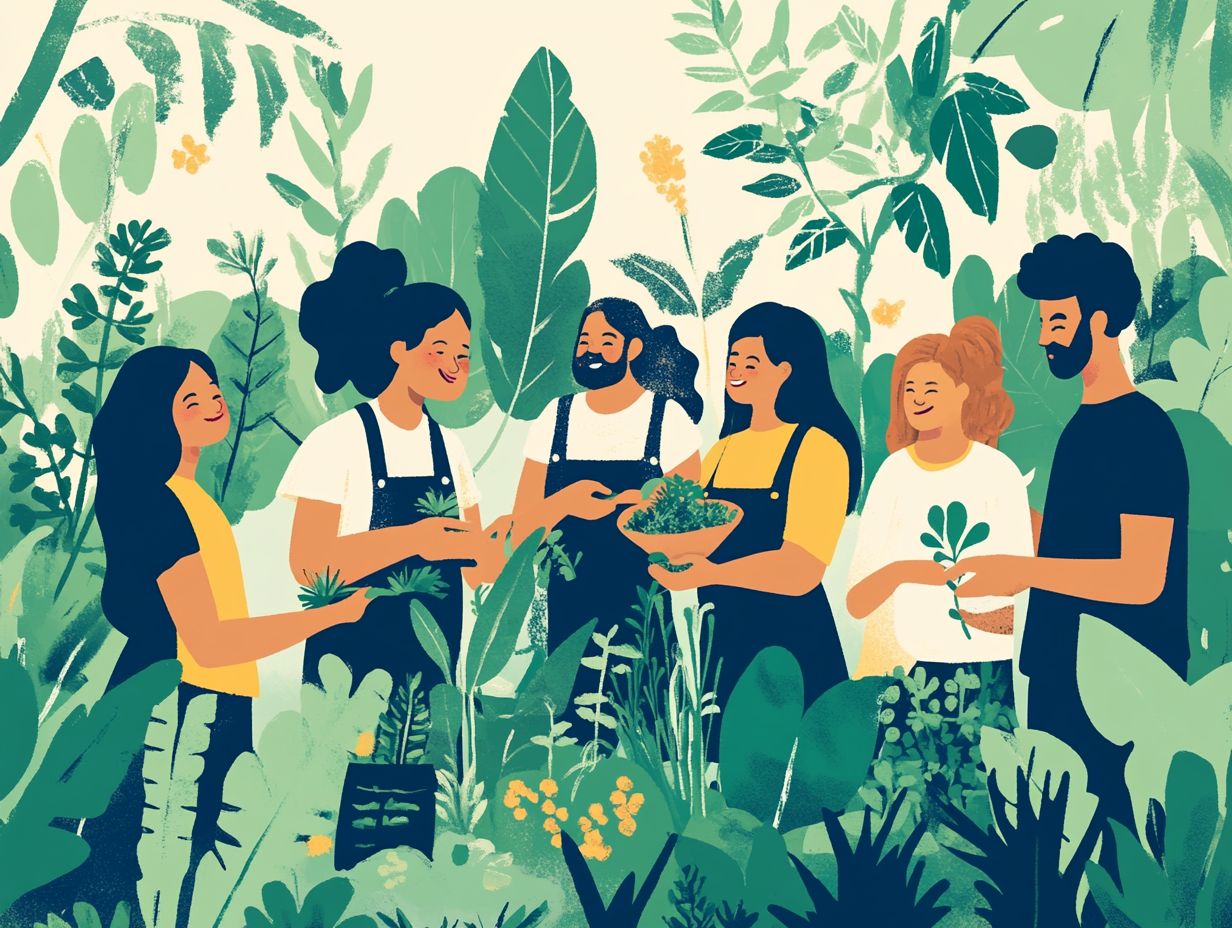
You can explore a myriad of resources within permaculture communities, including finding land for community permaculture projects, that enhance sustainability and foster ecological resilience.
Essential resources include:
- community gardens
- composting materials
- innovative food production methods
- the sharing of surplus goods
Together, these elements create a robust framework for resource exchange and enable the community on its journey toward sustainability.
Consider the value of shareable resources like community gardens, where you can cultivate alongside others, and composting initiatives that transform waste into rich soil amendments. These resources boost food production and foster collective engagement and resource sharing among local farms, embodying the essential elements of a permaculture community.
Imagine utilizing tool libraries, where you can borrow gardening and farming equipment. This significantly cuts down on unnecessary purchases while promoting sustainable practices. Urban foraging groups play a vital role as well, educating you on identifying edible plants in public spaces and deepening your connection with local ecosystems.
Workshops and skill-sharing sessions within these networks enable you to learn sustainable techniques and share your knowledge, amplifying the community s ecological impact. Such collaborative efforts enhance resource efficiency, build resilience, and strengthen community ties, ultimately paving the way for a more sustainable environment for everyone involved.
To share resources effectively within permaculture communities, it’s crucial to establish strong communication and collaboration strategies. This approach ensures that community feedback is valued and shapes the participatory events you organize, such as those outlined in how to develop community leadership in permaculture.
By involving grassroots community members, you cultivate a rich culture of sharing and cooperation that enhances the overall experience for everyone involved.
Communication and Collaboration Strategies
Effective communication and collaboration strategies are essential for fostering community feedback and building strong grassroots movements. By harnessing social networks and organizing participatory events, you can significantly enhance your volunteer base and promote effective resource sharing.
Hosting community meetings creates a space for open dialogue, where residents can articulate their needs and aspirations directly. Engaging in social media outreach allows you to swiftly disseminate information and gather opinions from a broader audience. Establishing feedback mechanisms like surveys or suggestion boxes enables individuals to consistently share their insights.
The importance of collaboration cannot be overstated in community organizing. When various organizations and community members unite, they create a synergy that leads to innovative solutions and shared resources. This collaborative approach strengthens relationships and cultivates a profound sense of ownership and accountability within the community, ultimately driving sustainable growth.
Challenges and Solutions for Resource Sharing
While resource sharing provides many benefits, it also introduces challenges that require attention to facilitate meaningful community engagement and enhance ecological resilience. Recognizing these hurdles and finding solutions, such as utilizing the essential tools for community permaculture projects, is crucial for social change within permaculture communities.
Addressing Potential Obstacles
Addressing potential obstacles in resource sharing requires a proactive approach to community engagement that emphasizes environment-friendly design ideas and grassroots initiatives.
You might consider solutions like educational workshops, community organizing, and creating an inclusive environment for all participants.
By recognizing the diverse backgrounds and needs of community members, you can enhance participation and collaboration. Be mindful that barriers such as misinformation, lack of trust, or limited access to resources could hinder progress.
To bridge these gaps, implementing interactive workshops that focus on sustainable practices and the benefits of sharing resources can be effective. Establishing regular communication channels like community forums or social media groups will encourage transparency and feedback.
Ultimately, nurturing a shared vision cultivates unity and enables individuals to take active roles in promoting resource sharing within their networks.
Creating a Sustainable Resource Sharing System
Ready to create a sustainable resource-sharing system? Start with long-term solutions that empower your community and enhance ecological resilience.
By embracing sustainable practices and prioritizing collaborative community initiatives, you can enable permaculture communities to flourish and adapt seamlessly to evolving environmental conditions.
Implementing Long-Term Solutions
Implementing long-term solutions for resource sharing requires your commitment to cultivating robust community networks that enhance ecological resilience.
By weaving sustainable practices into your daily operations, you can ensure ongoing resource exchange and collaboration.
Take the Transition Town movement, for instance, where local groups reduce their dependence on fossil fuels while sharing resources like tools and local produce. These initiatives strengthen community bonds and heighten awareness around environmental issues.
Collaborative consumption models, such as food co-ops or time banks, serve as powerful catalysts for change, motivating individuals to share their skills or surplus goods.
These examples illustrate how dedicated efforts in resource sharing can foster sustainable practices that benefit both the environment and the community.
Frequently Asked Questions
1. What is the importance of sharing resources in a permaculture community?
Sharing resources is essential because it promotes sustainability, reduces waste, and allows for a more diverse and resilient ecosystem.
Look for resources that have a high demand and low supply, such as tools, seeds, and knowledge. These resources can greatly benefit from sharing within the community.
3. How do I initiate the sharing of resources in my permaculture community?
Start by creating a system or platform for sharing, such as a tool library or a seed swap. You can also explore how to create a permaculture resource library to encourage others to participate and share their resources too.
Yes, sharing resources with non-permaculture community members is a great way to spread the principles and benefits of permaculture. For a deeper understanding, check out how to use permaculture principles in community design. However, it is important to prioritize sharing within the permaculture community first.
Join your local permaculture community today and start sharing resources!
5. What are some challenges I may face when sharing resources in my permaculture community?
Sharing tools and materials can be tough. You might face issues like poor organization, lack of communication, or misunderstandings.
It’s crucial to tackle these problems openly. By working together, your community can find effective solutions.
6. How can I ensure the sustainability and fairness of resource sharing in my permaculture community?
Regularly check how the sharing system is functioning. Make sure it works well and is fair for everyone involved.
Encourage everyone to speak up and collaborate. This way, your community can tackle any challenges head-on.

